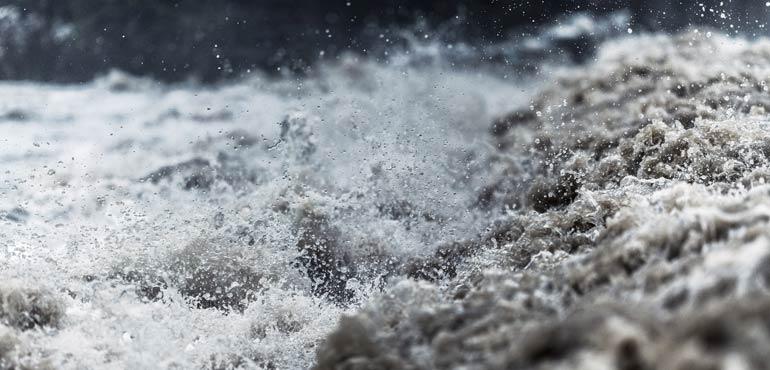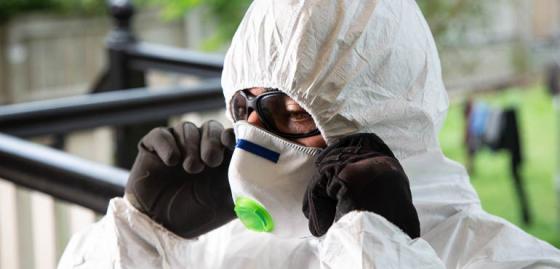
- Home
- Worksite & building practice
- Disaster and recovery
Disaster and recovery
The QBCC assists Queensland communities in preparing and recovering from natural disasters such as bushfires, floods, cyclones or severe storms.
Prepare for a disaster
Natural disasters occur all across Queensland and can have lasting effects long after the event has passed. We have tips and fact sheets to help you prepare for and limit the possible damage to your building site in the event of a natural disaster.
By taking precautions on your building site, you can help avoid the risk of injury, damage and costs associated with natural disasters.
Storm and cyclone season preparation
You should prepare your building sites for potential severe weather conditions. You can help avoid the risk of injury, damage, and costs associated with storms and cyclones by taking precautions.
It's a good idea to:
- remove all loose material and building rubbish from sites
- secure all onsite scaffolding, planks and equipment
- brace or fully core-fill concrete masonry walls
- fully secure all metal roof cladding, gutters and flashing
- raise and secure all material above known flood levels
- secure any temporary structures, such as site offices and shipping containers
- add extra bracing to frame areas that may have to resist high winds
- provide adequate and compliant site drainage to avoid site flooding
- close window openings to adequately protect all tongue-and-groove flooring and other timber features and furniture from wet weather
- check that your insurance policies and coverage are up-to-date and sites and values are accurate
- install protection or retaining walls to cut-and-fill sites to prevent the collapse of un-retained walls and soil runoff
- don't leave stagnant water in buckets and other unsealed containers
- return to the building site as soon as safe and practical to secure or address any dangerous or failed areas following weather events such as storms or high winds.
Building in disaster-prone areas
If you work in an area affected by natural disasters, the Queensland Government has developed guides to help build resilient homes in Queensland.
- Bushfire resilient building guide
- Flood resilient building guidance
- Cyclone and storm tide resilient building guidance
Get help during a disaster
Disaster contacts
- In an emergency: 000
- SES: 132 500
- 13 HEALTH: 13 43 25 84
- Energex: 13 62 62 (south east Queensland)
- Ergon: 13 22 96 (all other Queensland areas)
- Community Recovery Hotline: 1800 173 349
- Workplace, Health and Safety Queensland: 1300 362 128
Real time information
- Tune in to local radio
- Check the QFES social media
- Download the self-recovery app.
Rebuild after a disaster
The QBCC assists Queensland communities in recovering from natural disasters such as a bushfire, flood, cyclone or severe storm by providing technical and general advice on a wide range of rebuilding issues. After a disaster, there can be a lot of work to do. We provide some resources to help you when working on disaster-affected properties.
The Queensland Government has several factsheets that will help you in the immediate aftermath of fire:
- Repair of sheet metal roofs in cyclonic areas (PDF, 1773KB)
- Timber Queensland—wind tie-down connections (PDF, 6MB)
- Timber Queensland—framing anchors for specific tie down to multiple top plates (PDF, 393KB)
- Energex—severe weather safety
Roof repair and replacement advice videos from James Cook University's Cyclone Testing Unit:
- Wind classification for houses—information for contractors, builders and designers (VIDEO, 8.03 minutes)
- Wind classification examples—help for contractors, builders and designers (VIDEO, 6.39 minutes)
- Replacing roofs on houses—builders version (VIDEO, 9.33 minutes)
- Re-roofing after storm damage—builders version (VIDEO, 9.49 minutes)
Building contracts to use after a natural disaster
Natural disaster repairs contract
You should use the Natural disaster repairs contract (PDF, 702KB) for repairs of any value to residential premises from a natural disaster. Don't use this contract for the construction or rebuilding of an entire home.
Demolition contract
You should use Demolition of residential premises contract (PDF, 347KB) for the demolition of residential premises. While you can use it for any home demolition, it should be particularly useful for work involving flood and cyclone damage.
Frequently asked questions
No. You will need a QBCC licence if you want to contract directly with property owners or licensed builders to do building work in Queensland. You can apply for a QBCC licence under the mutual recognition program.
The QBCC licence system protects the local industry from 'fly-by-night' operators undercutting prices and lowering work standards. This is particularly important after a natural disaster when there is an immediate demand for labour.
- If you plan on contracting directly to property owners or a licensed builder to carry out building work, you need to hold a QBCC licence appropriate for the type of work.
- If you are not contracting directly to property owners or licensed builders (for example, working for wages or as a sub-trade contractor), you do not need to hold a QBCC licence.
- Suppliers or contractors involved in cleaning, carpet laying, and floor covering (except tiles or timber flooring) do not require a QBCC licence.
- Electricians must be licensed with the Electrical Safety Office.
- Asbestos removalists must hold a licence issued by Workplace Health and Safety for removing amounts of asbestos exceeding 10m². If you're removing less than 10m² of asbestos must be done as prescribed in the Workplace Health and Safety Regulation 2011.
Most of the work in a disaster area will be allocated by insurance companies. Contractors interested in working in the area should contact the major insurance companies. The QBCC does not link contractors to consumers.
In most cases, contractors licensed by the QBCC must purchase insurance on building work valued at more than $3,300. Find out more about Queensland Home Warranty Scheme.
Contractors may also take out more insurance such as public liability insurance and construction insurance. Even though these insurances are not compulsory, they are strongly recommended.

Register for our local contractor directory
The QBCC's Find a local contractor tool is a free service that helps property owners and other contractors connect with QBCC-licensed contractors in their area.

